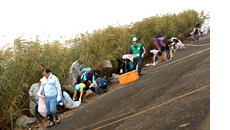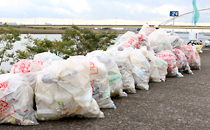Environmental Preservation and Building Environmentally-Friendly Societies

With awareness of environmental issues, every employee makes efforts to preserve the environment while recognizing the importance of protecting nature and biodiversity and contributing to the creation of environmentally-friendly societies.
Basic philosophy
Together with attempts to strengthen selection and control of chemical substances for the creation of products and processes that are friendly to people and the environment, we faithfully comply with laws and regulations in each country and customer criteria.
Control and reduction of substances of concern
Control of chemical substances contained in products
To strengthen the management of chemical substances in our products, we control legally regulated substances in each country, substances that are self-regulated by automakers, and substances covered by our own company regulations. We watch the trends in European REACH*1regulations and the EU RoHS Directive*2 and have a system in place to respond rapidly when these regulations are revised. To respond to requests from automakers in each country for information on chemical substances in products, we have devised mechanisms and conducted systems for global collective management of chemical substances that we are currently using in Japan, China, Thailand and Vietnam. We will be steadily expanding this system to places where it is not yet in use.
- *1 Registration, Evaluation, Authorization and Restriction of Chemicals
- *2 Restrictions on the use of specific hazardous substances contained in electrical and electronic equipment
■Chemical substance regulations in each region
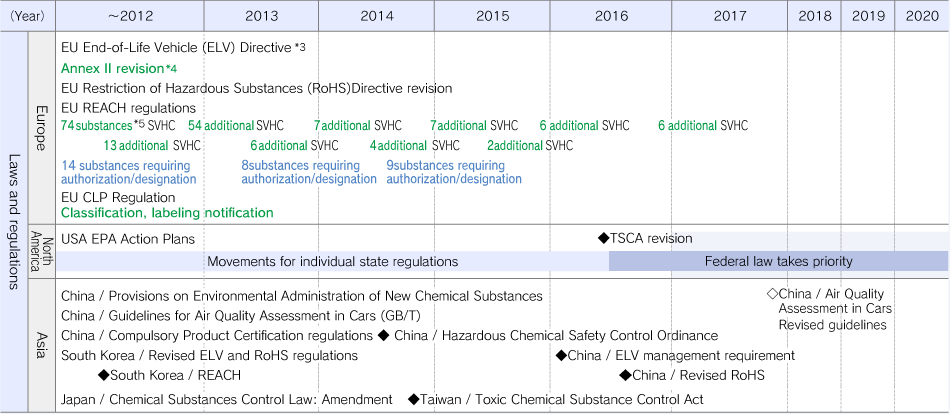
- *3 Restrictions on the use of substances of concern contained in automobile parts and materials
- *4 ELV appendix
- *5 Substances of high concern
Reduced use of substances of concern
In production processes, we are switching to water-based paint and release agents, making painting lines more compact, improving coating efficiency, and making other efforts to reduce Pollutant Release and Transfer Register (PRTR) substances and volatile organic compounds (VOCs).
Through on-site visits, we also share information on cases in which VOCs were successfully decreased to promote reduction activities.
■Volumes and flow of emitted PRTR substances
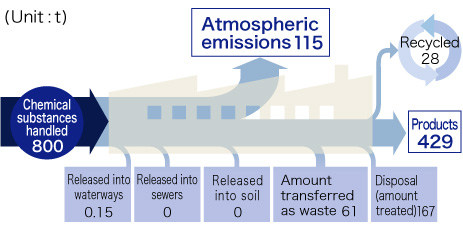
■VOC emissions/emissions per sales unit (index)*6
Japan, consolidated
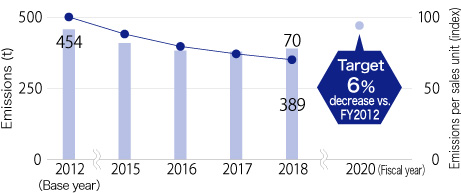
- *6 Emissions per sales unit (index) is a figure obtained taking FY2012 as 100
Toyoda Gosei Co., Ltd.
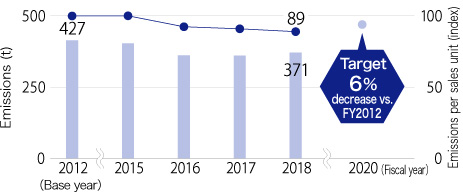
Activities for living with nature that build ties with the community
The Toyoda Gosei Group is working actively to protect nature and create environmentally-friendly societies through our plant afforestation project, biotope creation and environmental education.
We will further enhance these activities in coordination with the Toyota Group, government agencies, NPOs and others.
Mid-range plan for 2020
We have drafted a mid-range plan for biodiversity activities and are carrying out these activities with the slogan “Working to save our water, the source of life on earth.”
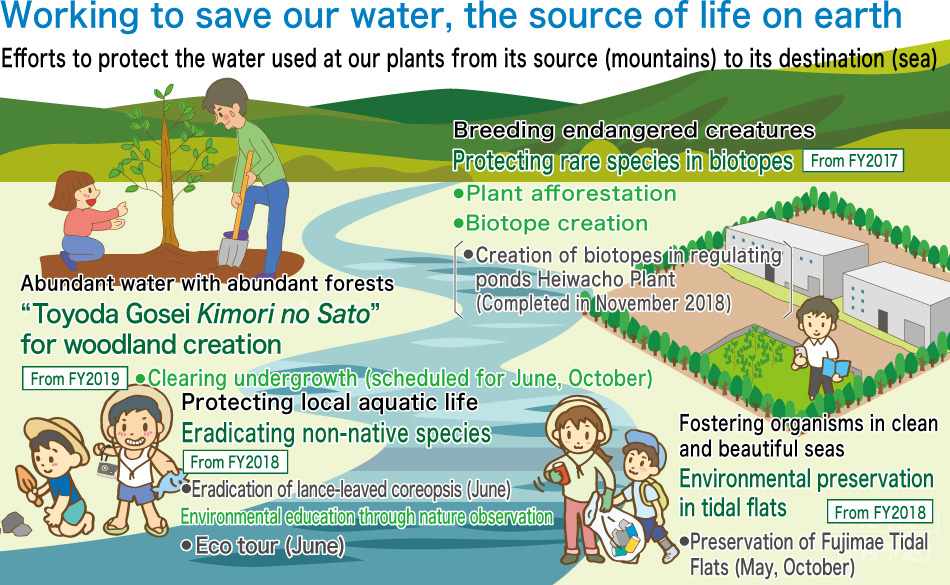
Plant afforestation
Our plant afforestation project was begun in 2009, and we have since planted about 300,000 trees at 28 locations around the world. The seedlings planted in these activities are grown in the company.
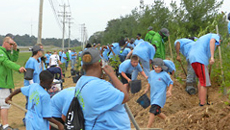
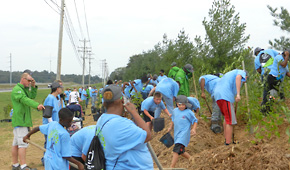 TG Automotive Sealing Kentucky, LLC, / USA
TG Automotive Sealing Kentucky, LLC, / USATree planting in October 2018.
Biotope creation
We are creating biotopes suited to each area around the world. To make it easier to secure the space and minimize costs, we have been creating biotopes in regulating ponds in coordination with government agencies and others.
- *7 Basins are made in residential areas, industrial plants, and similar places. They function to limit local flooding by temporarily storing rainwater during torrential rains.
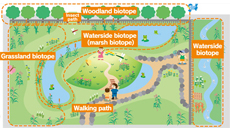
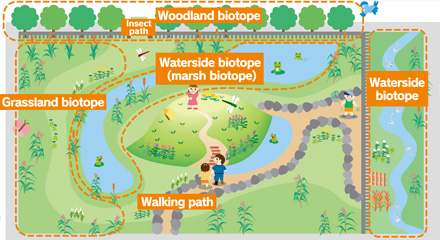 Completion of biotope using a regulating pond*7 (Heiwacho)
Completion of biotope using a regulating pond*7 (Heiwacho)
- *7 Basins are made in residential areas, industrial plants, and similar places. They function to limit local flooding by temporarily storing rainwater during torrential rains.
■Growth progress
-
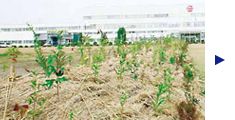 Heiwacho Plant, Japan
Heiwacho Plant, Japan
Planted November 2009 -
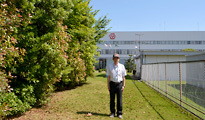 Heiwacho Plant, Japan
Heiwacho Plant, Japan
In May 2018
Plant Afforestation activities at locations worldwide
We have continued our Plant Afforestation activities since FY2009 to create nature-friendly production plants. In these Plant Afforestation activities we plant a large mix of local native species of trees and bushes at high density. These species then grow through natural competition to create true wooded areas that are resistant to natural disasters. Our tree-planting events are organized to build solidarity among participants, who include employees, their families, and local community members. After the trees are planted, employees continue to manage and care for them and record their growth. The seedlings planted in these events are grown in the company from seeds. Tree-planting events were held at TG East Japan Co., Ltd. and TG Automotive Sealing Kentucky, LLC in FY2018. To date, a total of more than 300,000 trees have been planted in 28 locations.
■Tree-planting event
-
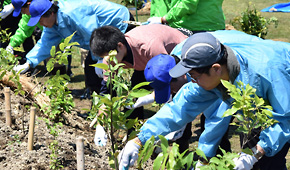 TG East Japan Co., Ltd., Japan
TG East Japan Co., Ltd., Japan
Planted May 2018 -
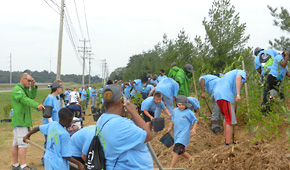 TG Automotive Sealing Kentucky, LLC, USA
TG Automotive Sealing Kentucky, LLC, USA
Planted October 2018
Creation of biotope*8 in plant regulating pond
A biotope was completed in November 2018 using a rainwater regulating pond*9 at Toyoda Gosei’s Heiwacho Plant (Aichi Prefecture, Japan). Creating a biotope with a regulating pond is unusual in Japan, and this was the first such effort in Aichi Prefecture.
This biotope was developed as an environment to foster rare organisms threatened with extinction. In addition to serving as a gene bank for Nagoya Dharma pond frogs and Japanese medaka fish, seeds of plants such as the Tokai dandelion are provided to other organizations. We also plan to use it as a learning site for local schoolchildren.
These activities are carried out in coordination with the All Toyota Green Wave Project and the Owari Seibu Ecosystem Network.*10
- *8 Derived from the Greek bios (life) and topos (place). An environment that provides a habitat for a distinct assemblage of organisms.
- *9 Ponds established in residential areas or industrial plants, which function to temporarily store rainwater during local severe rainstorms and prevent flooding.
- *10 One of nine such councils in Aichi Prefecture, established in November 2016. It consists of 45 groups, including NPOs and schools in the western Owari region, and serves as an ecosystem network.
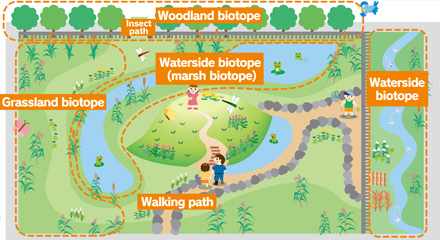
-
 Japanese dandelion
Japanese dandelion
-
 Japanese medaka
Japanese medaka
-
 Nagoya Dharma
Nagoya Dharma
pond frog
Participation in cleanup activities for the Fujimae Tidal Flat
In October 2018, employees and their families picked up large volumes of polystyrene foam, plastic bottles and other trash that had accumulated on the banks of the Fujimae Tidal Flat to protect its ecosystem. The Fujimae Tidal Flat is located in Nagoya and registered in the Ramsar Convention.*11 This provided an opportunity for participants to think about the environment, including understanding that birds and fish sometimes die from eating such trash and observing the animals (crabs, mudskippers, clams) that live in the tidal flat, which is not normally open to the public. This cleanup activity is held every year in cooperation with local residents and an NPO.
- *11 An international treaty on the preservation and regeneration of wetlands that are waterfowl habitats. It was adopted in Ramsar, Iran in 1971.
Participation in the eradication of Lance-leaved Coreopsis*12
In June 2018, we participated in an activity to get rid of Lance-leaved Coreopsis, an invasive plant species, that was held in the city of Miyoshi in Aichi Prefecture. About one ton of the plant was removed. This was done at the request of the prefectural government with the aim of protecting native plant species. The All Toyota Green Wave Project participated in cooperation local residents.
- *12 This flower was imported into Japan from overseas as an ornamental plant, but it propagates strongly and crowds out native species. It was recently classified as a designated invasive species, and its cultivation and sale are prohibited.
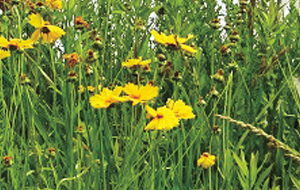
Ecosystem preservation activities in Lake Izunuma-Uchinuma, Miyagi Prefecture
In October 2018, employees of TG East Japan Co., Ltd. and their families conducted ecosystem protection activities, such as cutting excessive reeds growing in Izunuma and Uchinuma in northern Miyagi Prefecture.
Izunuma and Uchinuma are registered in the Ramsar Convention*11 because they are inhabited by more than 30 species of water birds, and they are wintering places for migratory birds including swans, white-fronted geese, and mallards. We work with the local environmental protection foundation*13 every year to help protect the ecosystem.
- *13 The Miyagi Prefectural Izunuma-Uchinuma Environmental Foundation
-
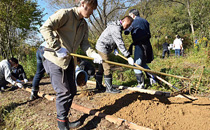 Maintaining a walking path
Maintaining a walking path
-
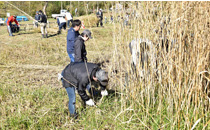 Cutting down reeds
Cutting down reeds
- Contributing to Environmental Preservation Through All Our Business Activities
- Sixth Environmental Action Plan Activities and Results
- Building Low-Carbon Societies
- Building Recycling Societies
- Environmental Preservation and Building Environmentally-Friendly Societies
- Environmental Management
- Environmental Efforts at Affiliated Companies
- Environmental Data
- Third-Party Verification
- Third-Party Assessment
